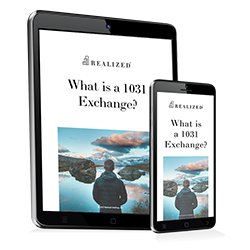
A 1031 exchange allows you to “swap” real estate used for investment or business purposes and acquire other like-kind properties. When handled correctly, the process can help you defer capital gains taxes and depreciation recapture on the sale of your real estate asset.
However, navigating the exchange can be daunting, especially if you’re unfamiliar with the process. In addition to knowing the 1031 exchange basics, understanding revenue rulings and procedures can help ensure that your exchange complies with IRS regulations.
1031 Exchange Basics
The like-kind exchange follows strict guidelines set by the IRS like the following:
- Property qualifications: You can only exchange real estate.
- Property use: Both the relinquished and replacement properties must be used as investments or for business purposes.
- Property valuation: The replacement property’s value must be equal to or greater than that of your relinquished property.
- Property proceeds: You must never have control over or direct access to proceeds from the relinquished property’s sale. A Qualified Intermediary (QI) is necessary.
The above requirements leave a lot of room for interpretation. As such, additional procedures and rulings provide further guidance and clarity to help ensure a successful like-kind exchange.
Core Revenue Procedures
The following are some of the procedures used to support Section 1031– Exchange of Real Property Held for Productive Use or Investment.”
Revenue Procedure 2004-86
Revenue Procedure 2004-86 confirms that Delaware Statutory Trusts (DSTs) are eligible as replacement properties in 1031 exchanges. The DST buys and holds the property. You exchange your relinquished property for fractional ownership in the trust.
If you’re considering a DST investment, be sure that the trust holds investment real estate (as opposed to funds or bonds) and that it adheres to IRS requirements.
Revenue Procedure 2000-37
This procedure explains the reverse 1031 exchange, which occurs if you acquire the replacement property before selling your relinquished one. You’re still required to abide by strict deadlines and can’t take control of property sale proceeds. You’re also required to work with a Qualified Exchange Accommodation Titleholder (EAT), as you aren’t permitted to own titles to both properties simultaneously.
Revenue Procedure 2008-16
One question that comes up is whether a vacation home or second home qualifies for a 1031 exchange. The answer to this question is whether these properties are held for ownership rather than investment.
At the same time, 2008-16 offers safe harbor rules for vacation and second homes as investments as long as you:
- owned the property for at least 24 months before the exchange
- rented the property for at least 14 days at fair market rental values within two 12-month periods before the exchange
- used the property for personal use for up to 14 days (or 10% of the total days rented)
Revenue Procedure 2018-58
Scenarios that are out of your control could make finishing the exchange within set deadlines extremely difficult. This is where 2018-58 comes into play; it provides guidance if you are in the midst of an exchange when a federally declared disaster strikes.
Under this ruling, the IRS might postpone deadlines depending on the disaster and the region it impacts. However, you (and your property) must meet certain criteria to qualify.
Revenue Ruling 2002-83
Can you do an exchange with a family member? Kind of. The 2002-83 revenue ruling provides specific rules for 1031 exchanges between “related parties” that include:
- Parents
- Spouse
- Children
- Siblings and step-siblings
- Other lineal descendants
- Any corporation or partnership in which you own more than 50%
Specifically, suppose you buy a replacement property from a related party. In that case, you’re required to hold that asset for at least two years after the acquisition to potentially defer capital gains taxes.
Another factor in this ruling prevents “basis shifting.” For instance, exchanging a low-basis relinquished property for a high-basis replacement property owned by a related party isn’t allowed. This tactic could allow the related party to later sell the low-basis property with minimal tax consequences, circumventing IRS rules. Exchanging it to a related party is considered an abuse of exchange regulations.
Knowing the Rules and Regs
The like-kind swap is complex. It also carries additional rulings and safe-harbor language to clarify many of the activities connected with an exchange. The above mentions just some of these rulings; there are many more.
Because of the regulations associated with a 1031 exchange, you should work with professionals who have know-how in this area. Realized 1031 has decades of experience in overseeing 1031 exchanges and understands the rulings and regulations associated with the process.
To learn more or to schedule an obligation-free consultation, visit Realized 1031’s website at realized1031.com.



